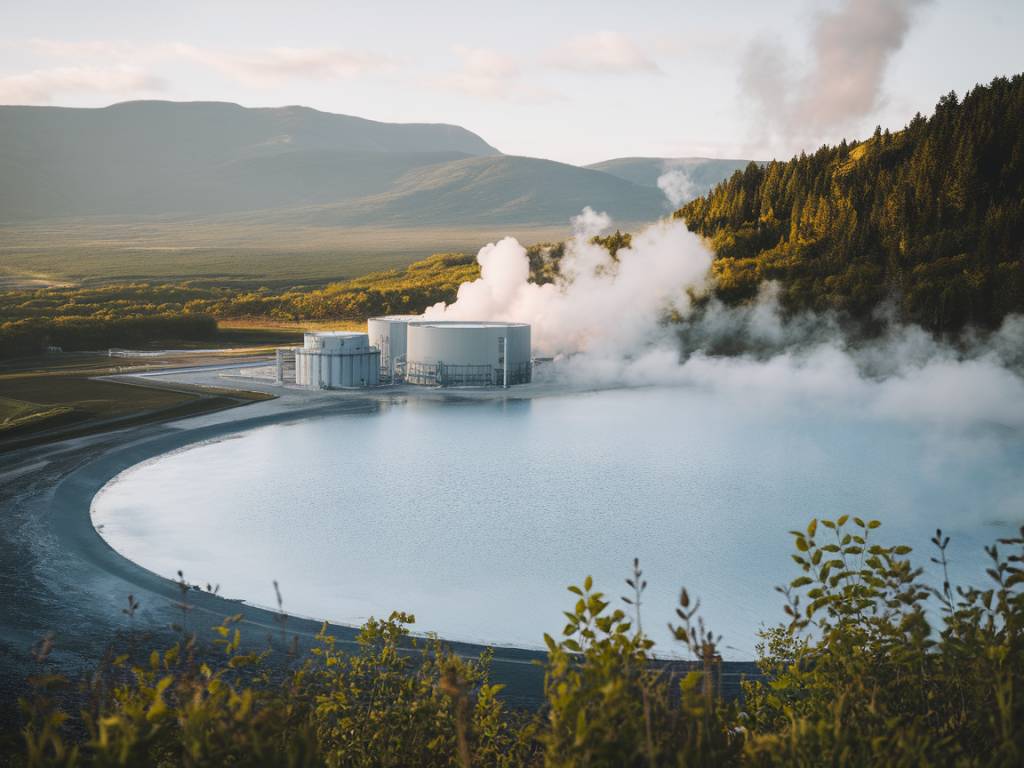The Rising Potential of Geothermal Energy in Untapped Regions
In the global quest for clean and renewable energy, geothermal energy often gets overshadowed by its flashier counterparts like solar and wind. But why? Is it because geothermal lacks the glamour of panels glistening under the sun or turbines spinning gracefully in the wind? Perhaps. Yet, beneath our feet lies an extraordinary, untapped resource that could fundamentally reshape how many regions meet their energy needs.
What Is Geothermal Energy?
Put simply, geothermal energy taps into the heat generated deep within the Earth. This heat originates from the planet’s molten core, radioactive decay of minerals, and the residual heat from Earth’s formation. By harnessing this thermal energy through advanced technology, we can generate electricity, heat buildings, and more. Not too shabby for a resource that’s been warming the ground beneath us for billions of years, right?
The Untapped Goldmine of Geothermal Energy
Although geothermal energy is already being utilized in some regions, its potential remains largely underexplored, especially in areas rich in geothermal reserves but lacking infrastructure or investment. According to the International Renewable Energy Agency (IRENA), current geothermal energy capacity stands at about 14 GW globally. However, experts suggest we’ve barely scratched the surface—potential reserves could exceed 200 GW!
So, where are these untapped hot spots? Regions across Africa, Southeast Asia, Central America, and parts of Europe show immense promise. For instance:
- East Africa: The Rift Valley, which spans countries like Kenya and Ethiopia, holds a tremendous amount of geothermal energy potential. Kenya is leading the charge on the continent, with its Olkaria geothermal complex producing over 800 MW of electricity. Other countries in the region, however, are only just beginning to explore their geothermal resources.
- Southeast Asia: Indonesia, famously located within the Ring of Fire, is home to around 40% of the world’s geothermal resources. Yet, it has only tapped into a fraction of these reserves.
- Central America: Countries like El Salvador and Costa Rica are leveraging some geothermal energy, but the region still has a vast amount of unrealized potential that could power millions more homes.
The Challenges of Tapping Geothermal Energy
Of course, geothermal energy isn’t without challenges. Drilling down to access geothermal heat is no minor feat. It requires significant upfront investments and highly skilled labor. This makes it less accessible to many developing nations, where resources could otherwise be abundant.
Additionally, high drilling costs come with risks. Not all geothermal wells prove successful, and the geological characteristics must be well-understood before development begins. Finally, even though geothermal is low in carbon emissions, projects must be managed with care to avoid locally damaging ecosystems.
Innovations Breaking Down Barriers
The good news? Innovations in geothermal technology are rapidly breaking these barriers. Advanced drilling techniques, such as Enhanced Geothermal Systems (EGS), are pushing the envelope by making geothermal energy accessible in areas that were previously considered unsuitable. EGS involves creating artificial reservoirs within hot rock formations, enabling energy capture even in geological “dead spots.”
Additionally, technologies like portable geothermal generators are speeding up deployment and making smaller-scale projects more feasible for rural or off-grid communities. Innovators are also working on hybrid systems that combine geothermal with other renewables, creating resilient and flexible energy portfolios.
Why Should We Care?
Still not convinced? Let’s talk about the benefits of tapping into this underused resource:
- Reliability: Unlike solar and wind power, geothermal energy isn’t weather-dependent. It provides a consistent energy source, 24/7, rain or shine.
- Lower Carbon Footprint: The CO2 emissions from geothermal plants are minimal compared to fossil fuels, helping us meet climate goals faster.
- Job Creation: Geothermal development requires a skilled workforce, opening doors for specialized career paths in engineering, geology, and environmental science.
- Energy Independence: Developing local geothermal resources reduces dependency on imported fossil fuels and strengthens regional energy security.
Geothermal Energy in Action: Real-Life Examples
Let’s take a closer look at two impressive geothermal projects making waves:
- Iceland: Known as a global leader in geothermal energy, this small island nation uses geothermal to produce nearly 27% of its electricity and heat 90% of its buildings. Reykjavik’s geothermal-powered homes in the middle of snow-covered landscapes are proof of its transformative power.
- United States: The Geysers in California is the largest geothermal field in the world and serves as a testament to how large-scale applications can power homes sustainably.
These are just the tip of the iceberg (or rather, the tip of the magma chamber). Many other projects show what’s possible when investment, technology, and ambition align.
Looking Ahead: Turning Potential into Reality
So, what’s next? To unlock geothermal energy’s true potential, investment in research and infrastructure is critical. Governments and private sectors must collaborate to reduce costs, streamline permitting processes, and educate communities about the advantages of geothermal resources.
Public awareness also plays a key role in adoption. After all, it’s tough to rally behind a resource most people don’t fully understand. Here’s where geothermal advocates, engineers, and enthusiasts (yes, we’re looking at you!) step in—to spread the word and push for policies that pave the way for geothermal growth in untapped regions.
In the race against climate change, geothermal energy is a sleeping giant waiting to be awakened. The question is, how long will it take for us to wake it up?
